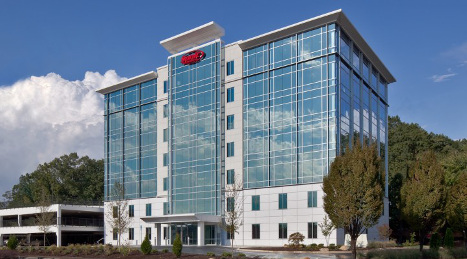In addition to announcing record profits on Wednesday, Penske Automotive Group said it increased its worldwide used-car sales by more than 10 percent in the second quarter, with its year-to-date sum now ahead by more than 12 percent over year-ago figures.
Penske sold 45,912 used retail units worldwide in Q2, a 10.4-percent increase in global used sales. Same-store used retail sales were up 6.2 percent at 44,121 units.
Through the first half of the year, Penske has sold 91,282 used retail units (up 12.6 percent) and its same-store tally came in at 87,744 (up 9.1 percent).
Gross profit per used vehicle retailed in Q2 was at $1,966, a 2.6-percent increase. Through six months, gross profits per used vehicle retailed is at $1,942, a 0.3-percent hike.
“Our business delivered another outstanding quarter, achieving over 20 percent growth in revenues, income from continuing operations and related earnings per share,” said company chairman Roger Penske. “I am particularly pleased with another quarter of double-digit, same-store retail revenue growth, further highlighting the benefit of our company’s brand mix and geographic diversification. We remain confident in the strength of the auto retail market and our ability to continue growing the overall business.”
DealerMatch announced this week the release of a new interface for MatchPro. The program, which was launched in January, is a self-learning, personalized recommendation engine geared for dealers which helps purchase vehicles from other dealers. With the new interface, dealers can now access MatchPro directly.
Paul Sims, the co-founder and customer strategy officer for DealerMatch, elaborated on the program’s improved usability.
“MatchPro works like Pandora or Amazon for sourcing wholesale cars,” Sims said. “It knows a dealer’s previous buying history and learns from his or her on-going behavior. MatchPro locates the most readily-available vehicles that match the buyer’s search criteria and behavior-based needs and displays all the decision-making data needed to complete a deal confidently on one screen.”
For more information about MatchPro and to request a demo, visit DealerMatch’s website.
Like some dealers of all sizes are experiencing, Group 1 Automotive turned more used metal during the second quarter but watched its gross profit per vehicle soften year-over-year.
According to its Q2 report released on Thursday morning, Group 1 stores in the U.S. retailed 22,707 used vehicles in the quarter, marking a 3.6-percent rise from the same span last year when company dealerships moved 21,928 units.
However, the gross profit per unit in the used department dipped slightly — 1.9 percent, to be exact — from $1,748 to $1,714. That gross softened even though the average retail price for those used vehicles moved up 2.1 percent in Q2 from $20,457 to $20,878.
Looking at its figures halfway through the year, the trends shook out the same within Group 1’s used department.
The company retailed 5.6 percent more vehicles at the midpoint of 2014 compared to a year earlier (45,450 units versus 43,044 units). The average retail price was also 1 percent higher this year versus 2013 ($20,342 versus $20,140).
But that gross profit on those used units was off by 4.8 percent halfway through this year compared to the same point a year ago. Group 1 reported the figure at $1,680, down from $1,765 after the first two quarters of 2013.
The headwinds in the company’s U.S. used operation wasn’t the only factor that impacted Group 1’s top line performance, which included adjusted net income of $40.0 million that equates to adjusted earnings per share of $1.47. Group 1 president and chief executive officer Earl Hesterberg pointed to the company’s results in Brazil, which he said produces a significant drag on the overall results.
“The Brazilian market deteriorated significantly during the quarter due to political and economic uncertainty, as well as major business disruption from the World Cup event,” said Hesterberg, whose company operates 19 stores in the South American country.
“Our Brazilian revenue declined 18.8 percent on a new-vehicle unit sales decrease of 22.3 percent. The deterioration in our Brazilian business represents a 15 cent reduction in our total adjusted EPS profit performance versus the comparable period last year,” he added.
As the wave of second quarter reports ring out from various automotive retailers, several commonalities have emerged. Sales are up. Profits are up. Conditions are ideal, and many are poised for further expansion. However, there was one key limiting factor that has come up in at least two of the groups’ conference calls: finding well-qualified technicians. According to Michael Kearney, Asbury Automotive Group’s executive vice president and chief operating officer, finding skilled labor can be the hardest part of expansion.
“In terms of roadblocks, obviously the biggest single roadblock, if you have all the facilities in place, would be the number of technicians,” Kearney said. “That’s the true throttle valve — how much work you can actually put through a shop.”
The days of simple engine servicing are long gone — aside from jobs like oil changes and topping off fluid levels, you can’t just pull anyone off the street, hand them a mechanic’s manual for a specific model and expect them to navigate the complexities of today’s engineering feats.
Kearny, whose company saw a 9-percent year-over-year increase in technician hiring, said finding skilled labor is “something you have to proactively go out and pursue.”
“The short answer is there is a substantial amount of skill level with the technicians that work on these cars today,” Kearney said. “As you know, they’re very sophisticated; they’re quite complicated.”
Even the country’s largest automotive retailer is having trouble finding the talent they need to fix today’s issues. Mike Jackson, AutoNation’s chairman and chief executive officer, said during his group's call that it has proven difficult to hire qualified technicians.
“Yes, it’s an issue,” Jackson said. “It’s a great-paying job. If you take the top 20 percent, average pay is above $75,000; the top 10 percent is six figures. These are very well-paying jobs for skilled individuals, but we are competing with other industries for this technical skill.
“There’s a real demand in multiple industries for individuals with technical skills that we’re willing to pay very well for, but it’s not like when we say we need to hire more technicians we’ve got a line standing at the door with applications and we just bring them in. That’s a critical path for us on growing the customer care business.”
Mike Maroone, AutoNation’s director, president and chief operating officer, says his company has been focusing on the search for skilled labor from the very start.
“This is not just a Q2 initiative,” Maroone said. “We’ve been ramping our technician population up, and we have a goal of 400. We’re over halfway through that goal, but we also have expanded our quick service capabilities tremendously. Those techs aren’t quite as efficient as your shop techs. We continue to push the envelope, and we think there’s more opportunity there so that’s a key initiative in the company.”
AutoNation, who, according to Jackson, has a utilization rate in the high 90s in regard to their technicians, was not expecting the service load that they have received this year due to the unusually high number of recalls.
“If we had more technical capability we would be growing faster right now,” Jackson said. “It was not folded into the plan a record year of who knows what the final number will be, 40-45 million recalls or whatever it is. So, in that sense, it gives you an indicator that how on the margin we are here and just that surge in demand we are at this point substituting recall work for normal customer care work. Because we don’t have the technicians.”
While the demand for skilled labor increases, Asbury has implemented a program to bring lesser-trained individuals in-house to teach them the skills they are looking for in a technician.
“We have a very aggressive program internally for hiring and maintaining and now training our own techs,” Kearney said. “It’s a brand new program. We’ve just started it, but we feel very comfortable about that. We want to make sure that when that growth is presented to us that we, who are very opportunistic, can take advantage of it and we don’t want some outside influence be a hurdle for us.
“We started a program in one of our markets, taking a facility and bringing in young men and women and training them at a certain level. We have a little, small facility that we put together and we’re working on training them. We have control of those individuals," he concluded.
Lithia Motors reported its second-quarter results Wednesday, revealing an 11-percent increase in same-store used retail sales. And much of the company’s conference call to discuss Q2 financial results was spent outlining the recent DCH Auto acquisition and what it means for Lithia going forward.
And overall used retail sales were up a significant 14.3 percent for the quarter: Lithia sold 16,086 used retail vehicles in Q2, up from 14,074 sold during the same period last year.
Consequently, used-vehicle retail revenue was up a whopping 20.1 percent, coming in at $310.48 million.
Used inventory was up, as well, as days’ supply in Q2 sat at 60 days, an increase of nine days from the year-ago period.
Bryan DeBoer, president and chief executive officer, said, “We are comfortable where we are with used inventory. It’s becoming a lot easier to procure those CPO, late-model vehicles, and at lot of our stores, it is the path of least resistance to find those cars.
But he pointed out he thinks some work may be due in keeping to the company’s core product: 3- to 8-year-old cars.
“They are more diffiuclt to find, but people are trading them in,” he said. “It is quite a balance to keep our teams helping used-car managers divest those cars that are late-model and finding the core product.”
He explained keeping to this core product will help the dealer group move toward its goal of retailing 75 used retail units per-store per-month.
The DCH Integration
This used success comes on the heels of the company announcing a major acquisition. In June, Lithia announced it entered into an agreement to buy DCH Auto Group, one of the largest privately owned dealer groups in the country. This acquisition is expected to close in the fourth quarter — Oct. 1, specifically, Chris Holzshu, chief financial officer and senior vice president of Lithia, pointed out during Wednesday’s call.
The 27 DCH stores are located in New York, New Jersey and California. Lithia management shared the integration of the DCH dealer group will “open up” many more metropolitan areas to the company.
As for the brand mix, company management pointed out 82 percent of DCH’s business is made up of Japanese brands Honda and Toyota.
Company management pointed out the acquisition is one of the biggest of its kind seen in recent years.
As to how the locations of the new stores will impact seasonal performance for Lithia, DeBoer didn’t think much would change.
“Some of it’s (DCH) in the northeast, which is seasonal, and some is in Los Angeles, which is not so seasonal, so I think if you compare it to Lithia, it appears it will respond similarly to the seasons quarterly,” he shared.
As for how the company will be funding the deal valued at more than $360 million, Holzshu said that over the past 30 days, Lithia has been in discussion with its lender partners to expand its credit facility as well as obtain mortgage financing “in order to position us for the integration with DCH later this year.
“We anticipate funding the transaction through the expansion of Lithia’s current credit facility by $600 million and by incremental mortgage financing of approximately $200 million,” he said.
As with any large merger, the issue of combining teams is a lengthy process.
As announced back in June, DCH’s current management will continue to lead the DCH stores, as president George Liang will report to DeBoer.
Once the deal is finished, DCH founder Shau-Wai Lam will likely join Lithia’s board of directors.
As to why Lithia won’t be replacing the company's management, DeBoer said, “I think as we began to meet the management team of DCH, it became apparent that they run their operation and are solid in how they do that, and their culture was very similar to ours."
He went on to share Lithia management sees team integration as well within the two company’s grasp.
“The goals we have established for each other are reasonable,” he said.
But it won’t happen overnight.
Holzshu said, “It is going to be something that is transformational, and it will most likely take three to five years to fully integrate."
Also on the mind of the industry and investors is whether Lithia is in the market for any other large private dealer groups as well as whether they have seen an increase in interest in such acquisitions within the public dealer group circle.
As to whether any other large acquisitions are in the works, DeBoer said the dealer group needs time to focus on DCH integration.
“We believe that we have a confident team, and I think it is fair to say we have some work in front of us, and we need to focus on the DCH program, but we also never rule out other opportunities,” he said. “If it is a larger type of transaction, I think we will cross that bridge when we come to it.”
One aspect of Lithia’s acquisition strategy that may be attractive to potential private dealer group sellers is “the ability for us to allow dealerships and groups to act as entrepreneurs as they always have,” said DeBoer.
As seen in the DCH deal, Lithia tends to work alongside current company management during acquisitions.
DeBoer explained this atmosphere helps to bring many potential sellers to the table.
And this thinking goes into Lithia’s buying decisions, as well.
“We looked at a number of different groups. It is unique that the management teams of both companies involved know each other for a number of years, and the way we were able to quickly get on the same page in terms of what we are trying to accomplish … it was pretty natural, and I don’t think any of the discussions we have had with other groups have been so natural,” he said.
It was also implied during the call this move may open the doors for other private dealer groups looking to sell.
“I don’t know what the appetite is of all dealers, but we have been in discussion with other dealer groups, and it’s about whether it is the right timing for their planning and for their pocketbook,” DeBoer said. “What it may show is that the opportunity to do something like this is out there, and it may spark some interest in other groups to look at exit strategies or partnership types of strategies.”
There were plenty of cars available during the second quarter that were nice fits to be sold as certified pre-owned. And there were plenty of high-mileage used cars for the taking.
Problem was, says AutoNation executive Mike Maroone, there just wasn’t enough of the middle ground.
But the retailer has taken steps to alleviate this issue, and so far, it appears to have paid off.
“We had good enough new-vehicle sales (to generate trade-ins); we didn’t take the kind of trades we wanted to take. And late in the quarter, we went out and started supplementing that inventory and built that inventory as the quarter went along,” he said during the retailer's second-quarter earnings conference call last week. “There was plenty of CPO product, and there was a lot of high-mileage product –— both of which we like — but that mid-tier, affordable used car, we didn’t acquire enough of them, so we just need to re-double our efforts there.”
To recap, AutoNation’s saw some solid increases on the used-car side — as detailed here by Auto Remarketing — but same-store used retail sales did slip 0.5 percent on a year-over-year basis.
“We were pleased with our gross profits being up $91 a car,” said Maroone, referring to the group’s $1,687 same-store gross profit per used vehicle retailed, “but we really did miss some opportunity.
“We ramped up the inventory as the quarter went on and finished the quarter at 36 days’ (supply of used vehicles),” he said. “So, we’ve taken the inventory up about 20 percent; we’re up to about 27,000, I believe, in inventory right now and really need to push the volume button this quarter. We got the gross, we did not get the volume.”
Maroone added: “The CPO business was strong, but clearly we didn’t retail the trades that we needed to retail, and we’re going to really focus on it this quarter, as we have ramped that inventory.”
When asked to give a bit more color, he explained that the challenge was that “supply was tight for the right merchandise,” referring to cars in the “medium-price, reasonable-mileage” ballpark.
“We believe that with more cars coming off lease in the next couple quarters, the supply should be in better shape, but we have ramped our inventories, because we can’t wait for that happen,” Maroone explained.
And by increasing its supply, the retailer began seeing improvements in July, Maroone said, estimating that same-store used sales had climbed 7 percent year-over-year so far in the month.
The Greater New York Automobile Dealers Association has named Robert Vail as its new chairman.
Vail, the current president of the Vail Auto Group in Bedford Hill, N.Y., has been a member of the GNYADA board of directors since 1993 as well as holding several positions on both the executive and finance committees for the organization.
The third-generation auto retailer joined the business in the 1960s as a mechanic at the family Ossining Studebaker dealership; Vail’s grandfather opened a Chevrolet dealership in the same town in 1918.
Mark Schienberg, GNYADA’s president, expects Vail to perpetuate his contributions to the association in the new position.
“Bob has been a dedicated advocate for dealers over many years and brings a wealth of knowledge and experience to the job,” Schienberg said, “and I look forward to working with him on the Association’s many important lobbying efforts and grassroots dealer and consumer initiatives.”
When Sonic Automotive held its conference call to discuss second-quarter results on Tuesday, on top of a record used-sales performance, the focus was on a series of initiatives the dealer group is either rolling out or beginning to reap the benefits of this year.
During the call, investor interest circled around Sonic’s True Price strategy, the Sonic Inventory Management System (SIMS) and its newest rollout — One Sonic-One Experience, the company’s stand-alone pre-owned model.
Jeff Dyke, Sonic’s executive vice president of operations, contributed much of the company’s used success in Q2 to SIMS, which the company finished rolling out in February of 2013.
The system was to play a large part in meeting the company’s goal of 100 pre-owned sales per store per month — a goal which Sonic reached this past May.
Not only did the company sell a record 28,514 pre-owned units in Q2, but it also reached 100 used unit sales per-store in May and 93 units pre-month for the second quarter as a whole.
The company has been ramping up used volume using its new inventory management system, and Dyke said, “We are going to get more aggressive in terms of our pre-owned volume in the coming quarters.”
When asked where the company is finding the majority of its used inventory, Dyke pointed to its auction partners.
“We are working with our auction partners, Manheim specifically, to pinpoint cars before they even get to the auction, so we can fulfill our needs,” he said.
Management explained though they are acquiring some off-lease vehicles, most of the inventory is coming from working with their auction partners as well as capitalizing on customer trade-ins.
“We don’t ever have trouble getting inventory — if you have the right systems and processes in place to get them, there are plenty of used vehicles,” Dyke added.
One Sonic–One Experience Takes Off
The company’s success with SIMS may be most visible through the One-Sonic-One Experience beta testing at pilot store Town and Country Toyota in Charlotte, N.C.
Dyke said the store is projected to see an increase in used volume of 21 percent year-over-year, based on recent projections.
David Smith, vice chairman at Sonic, took time during the call to point out the goals of the new standalone pre-owned store model:
“The objective is to put the power in the customer’s hands where they can enjoy the automotive buying experience with one associate, at one price, in one hour,” Smith said.
“We believe our experience will be unique in the industry and will improve transparency and expand trust and will result in greater market share, higher customer retention and increased profitability,” he continued.
A full version is in beta testing at the Toyota pilot store, and the “Experience” will be fully implemented in the Charlotte market by the end of the year, he said.
“We expect the company-wide implementation will take 18 months after the Charlotte pilot,” Smith added.
The new SIMS inventory tool works in concert with both the no-haggle True Price pricing methodology as well as the standalone pre-owned store model, Dyke pointed out.
“So the idea there is to not average three pencils to negotiate a price. Our pricing tool really uses algorithms on a ZIP-code basis and focuses on what other dealers are selling cars for — not what they are pricing cars for, but what the transaction prices are — and this allows us to price accordingly on a minute-to-minute basis, if we wanted to,” Dyke said.
“The whole idea here is we can reduce the amount of time it takes to buy a car. I spend a lot of time in the store (Town and Country Toyota) on Saturday, and the feedback from the customers was amazing. We literally penciled a deal with products in less than a minute, and that is the system and the algorithms working together. So you can image when the store gets all trained up advertising and marketing starts, what is going to happen,” Dyke continued.
“We have had great returns early on … it all works together,” he added.
Will No-Haggle Take Over Negotiation?
Also key to the company’s One Sonic-One Experience model is a no-haggle pricing environment.
With the company’s plan to roll out the rest of the One Sonic-One Charlotte stores over the rest of the year — with an aggressive marketing and advertising plan to go along with the move starting in October — investors were curious as to whether the company had experienced any backlash from dealers over the no-haggle pricing strategy it is pushing in both new and used.
Dyke explained all dealers are on board as of 2014.
Dyke said, “We have had nothing but great support here the first six months of the year. All our stores are begging us to move faster on our One-Sonic rollout.”
That said, dealers were a bit wary in years past, but Dyke said once they saw how the system worked and the potential there, it didn’t take long to gain full support.
“The industry is going to change, and we are just going to change a bit ahead of it. Many of them (Sonic dealers) participated in developing all this,” Dyke said.
As to whether the no-haggle pricing model will put a damper on gross profit per used unit in the future, Dyke didn’t seem too worried.
The exec explained GPU may take a dip or stay flat in the beginning, but the main goal is to grow market share — and gross profit is expected to eventually follow suit.
As to whether no-haggle pricing will grow beyond CarMax and Sonic and spread to other publically traded dealer groups remains to be seen.
But Dyke is confident the trend will catch on.
“There are certainly other dealers who are in a wait-and-see mood. Dickering is something that is going away. The experience you provide is going to be what drives sales … there is no question that at some point in time, the industry is going to make a step toward no-haggle pricing,” Dyke concluded.
For more on Sonic's Q2 financial results, see the below Auto Remarketing story:
Sonic Breaks Used Sales Record & Hits Goal of 100 Units Per Store
Asbury Automotive Group announced across-the-board gross profit increases including a 7-percent increase on the used-car side.
The company retailed 18,840 used vehicles in the second quarter, which proved to be 1,137 more used vehicles sold than in the second quarter of 2013, a 6-percent increase.
Total used retail gross profit came in at $33.7 million, up from $31.5 million a year ago.
On a same-store basis, it was at $32.8 million, up from $31.5 million in the second quarter of 2013.
Same-store gross profit per used vehicle retailed was up 2 percent at $1,807. Used retail gross margins were at 8.6 percent, down from 9.0 percent a year ago.
Michael Kearney, Asbury’s executive vice president and chief operating officer, attributes the company’s overall success to the current automotive market situations and the Asbury employees’ dedication.
“The industry continued to gain momentum in the second quarter,” Kearney said. “Our teams continue to demonstrate the strength and diversity of the earnings power of the Asbury dealer model, delivering gross profit growth across all segments of the business.”
The company shared some other Q2 performance highlights compared to the same period the prior year:
- Total revenues increased 12 percent to $1.5 billion
- New-vehicle retail revenues up 12 percent
- Finance and insurance revenues up 11 percent
- Parts and service gross profit up 11 percent
- Total gross profit up 12 percent with increases from all business lines
- SG&A expense as a percent of gross profit improved 90 basis points to 68.3 percent
- Record operating margin of 4.8 percent
- Repurchased $20 million of Asbury common stock
- Closed on $60 million of mortgages in July
Asbury also acquired a Hyundai franchise in Deland, Fla. along with opening their first Q auto store in Brandon, Fla., the first in a future chain of stand-alone used vehicle stores the company has planned to open.
The company is on track to open a second Q auto store in the fall.
As the public dealer groups began reporting their second-quarter performances in full force, Sonic Automotive revealed it reached an all-time high for used sales.
The company sold a record 28,514 pre-owned units in Q2.
Pre-owned units sales per store per month were up, as well, reaching 100 units in May and 93 units for the second quarter as a whole. The company has been working toward the per-store goal reached in May for over three years, company management shared.
Jeff Dyke, Sonic's executive vice president of operations, stated, "We had a fantastic quarter, achieving another significant milestone. In the month of May, we retailed 100 pre-owned vehicles per store per month. This was a goal we set for ourselves over three years ago and we know we can continue to build on this accomplishment."
The dealer group’s soaring used sales pushed pre-owned revenue up by 12 percent or $64.9 million.
And used sales weren’t the only metric to reveal a record.
Sonic also reported all-time record quarterly fixed operations gross profit in Q2 of $159.9 million, up 8.7 million or 5.8 percent year-over-year.
Lastly, the company also announced an all-time record total gross profit of $364.9 million, up 23.1 million of 7.1 percent from the year ago period.
Editor’s Note: Stay tuned to Auto Remarketing for more analysis on Sonic’s Q2 performance.












